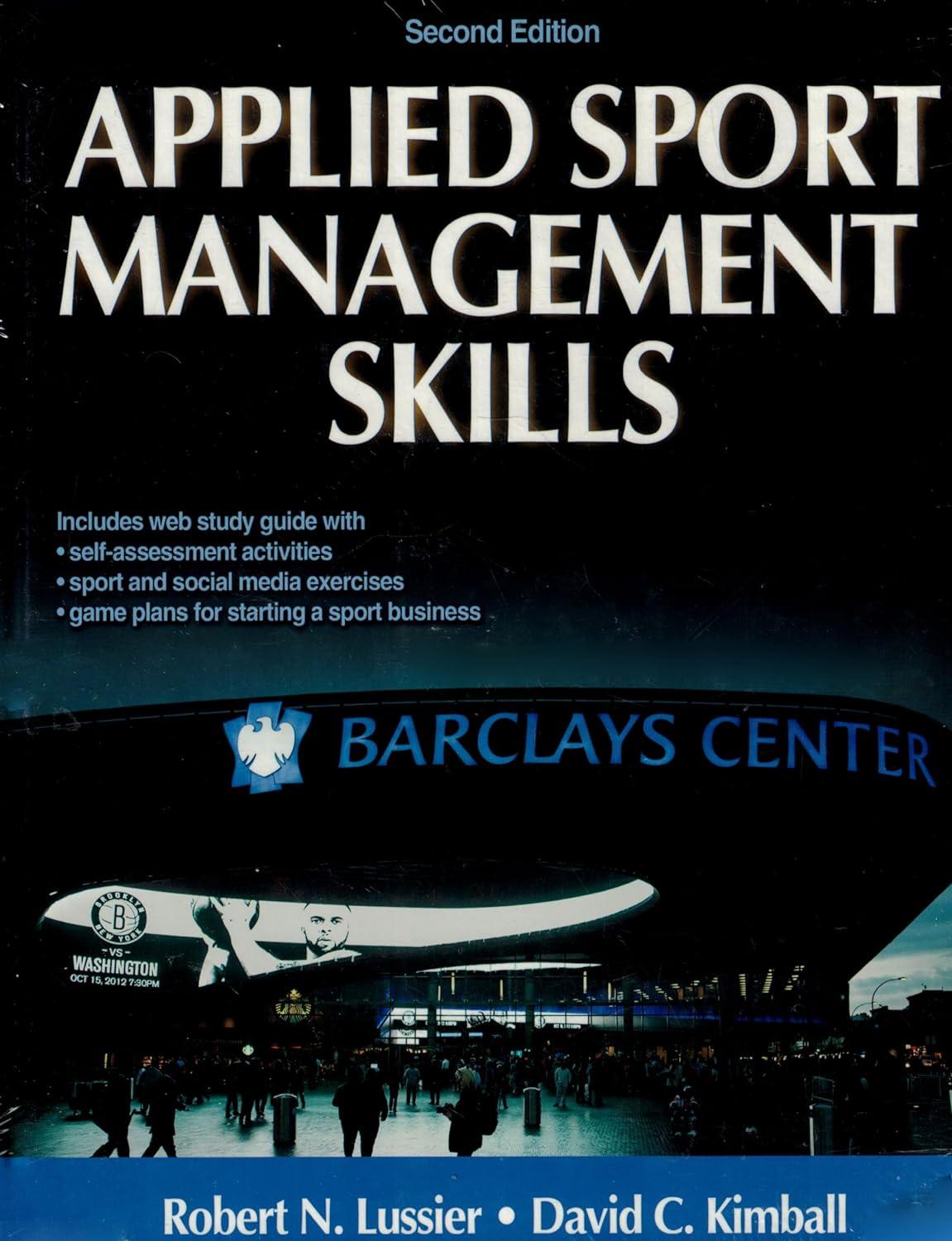Al Dunbar can normally be found at the Springfield, Massachusetts, Jewish Community Center (JCC) teaching the fine
Question:
Al Dunbar can normally be found at the Springfield, Massachusetts, Jewish Community Center (JCC) teaching the fine art of playing tennis. As a coach he has a profound impact on youth. He is the father of two daughters and one son. When his girls were young, he would set up a tent on the grounds of the JCC for the girls so that he could teach and be a hands-on parent during the summer.55 As his own children grew up, Al went on to coach and train many other children in the skills of playing recreational, high school, and collegiate-level tennis. For his commitment, Al was voted a Key Players Ambassador. Key players are noted for making a difference in children’s lives.
However, Al is more than just a tennis instructor. He is truly passionate about the game of tennis. He has been a member of the U.S. Tennis Association national board. He attends the U.S. Open, where the largest stadium is named after his late friend Arthur Ashe. He still plays tennis and often wins his age bracket.
Al is one of the tennis directors for the Shelly Rosenthal tournament held at Forest Park in Springfield. The tournament is often the first chance young players have to play in a competitive tennis event.56 Al has also been a schoolteacher all of his life. He started with a distinguished career teaching and coaching at high school. After a short and restless retirement from teaching, Al returned as a media teacher in a different high school. As would be expected, he is also the tennis coach.
Al is very compassionate and loving with his junior players. His primary goal is for the players to love the game of tennis. He nurtures the students and helps them learn more about the game and the famous players they watch on television. He often organizes trips to professional tennis matches so they can watch live events.
As his players get older, he instills a greater sense of competitiveness. As they enter a high school with a competitive tennis team, he tells his players to be ready to practice hitting with the older students. At some point it will be their turn to play on their high school team, and they should be ready for either singles or doubles play.
On a good day (which can also be a cold snowy day), you can find Al out coaching tennis to players of all ages. He motivates them with his passion for tennis.
Case Questions
1. Al focuses on motivation and performance.
a. true
b. false.
2. Al focuses on which factor in the performance equation?
a. ability
b. motivation
c. resources.
3. Al's junior tennis players appear to be on which level in the hierarchy of needs?
a. physiological
b. safety
c. social
d. esteem
e. self-actualization.
4. Al focuses on which level of ERG needs with his junior tennis players?
a. existence
b. relatedness
c. growth.
5. Al's approach has less emphasis on meeting which need?
a. achievement
b. power
c. affiliation.
6. Herzberg would say that Al is using
a. maintenance
b. motivators.
7. Vroom would agree that Al uses expectancy motivation theory.
a. true
b. false.
8. Adams would say that Al offers
a. equitable rewards
b. underrewards
c. overrewards.
9. Al uses goal-setting theory.
a. true
b. false.
10. Al uses which types of reinforcement?
a. positive
b. extinction
c. avoidance
d. punishment.
11. What type of motivation do you think Al uses with his players? Do you know any sport organizations that use Al’s motivating techniques?
12. In a position of authority, would you use Al’s motivational style? Explain your answer.
13. Could Al’s technique work in all organizations? Explain your answer.
Step by Step Answer:

Applied Sport Management Skills
ISBN: 275519
2nd Edition
Authors: Robert N. Lussier, David C. Kimball





